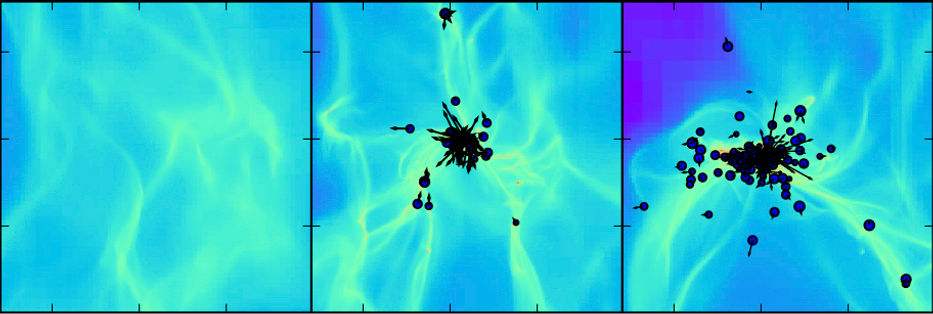LIN Kaiyu 林楷育
Collaboration with Theoretical Astrophysics Lab – Star Formation — Scientist & Artist Matching Platform: Co-Evolution Research Team (2022–2024)

Universality of Stellar Clusters - Initial Mass Function Data.
Image credit: Yueh-Ning Lee - Theoretical Astrophysics Lab ;
Over a period of several meetings, I participated in the Scientist & Artist Matching Platform: Co-Evolution Research Team (2022–2024), in collaboration with the Theoretical Astrophysics Lab – Star Formation. I visited and met with scientists whose research specializes in the physics of star formation, using numerical simulations to investigate the complex nature of turbulent star-forming regions, and carried out research in our studio.

Observatory and Theoretical Astrophysics Lab
As well as absorbing the overarching astrophysical and observational framework, we distilled areas of specific shared curiosity: the methods used to intercept photons travelling millions of years from their stellar origins, the series of optical and digital translations these signals undergo, the data they generate, and the stories this data tells about the birth and evolution of stars. In my artworks, we seek to create embodied and sensory experiences of these celestial processes, framed through the scientific and technological instruments that make them visible. This is not only an exploration of humanity’s capacity to construct knowledge of the cosmos, but also a reflection on our position within it. We found ourselves as fascinated by the precision tools and methods of astrophysics as by the cosmic phenomena they unveil.
Cooking the Cosmos
Our first meeting took place at Lee’s observatory. Beneath the sliding roof, we intercepted photons and cosmic rays that had travelled for millions of years before meeting the telescope’s mirror. In the quiet of the dome, our conversations moved fluidly from turbulence in the interstellar medium to the physics of star formation, from the dynamics of stellar clusters to the structure of planetary disks. Where others might trade cooking recipes, we spoke of “slow-cooking the cosmos” and “sous-vide-ing the solar system.”
Through regular discussions, I was given insight into Lee’s research environment, including her observational facilities and modelling work on star formation processes. This exchange became a framework for exploring how astrophysical phenomena—especially the birth and evolution of stars—could be translated into movement, light, and spatial experience.

Over the following months, our dialogue intertwined astrophysics with movement, light, and performance, shaping an inquiry into how gravitational processes and stellar evolution might be embodied and experienced. The collaboration culminated in a public lecture and live performance, transforming scientific narratives into choreographic form.
Future Directions
Building on these works, I aim to extend the collaboration into experimental installations and live performances that merge astrophysical data with embodied practice, integrating advanced imaging, motion capture, and spatialised sound. These future iterations will explore the perceptual limits of scale and time—inviting audiences to experience the cosmos as a tactile, temporal, and communal event. Opportunities for partnership with international research facilities, such as gravitational wave observatories or deep-space imaging projects, would open new modes of public engagement with scientific discovery.
The residency culminated in the creation of performance and Special Lecture
This dialogue has led to major cross-disciplinary works, including: Scientist & Artist Matching Platform — Co-Evolution Research Team: Special Lecture “Scientist X Artist Co-Creation Proposal Room 2 — Lee Yueh-Ning X Lin Kai-Yu — Astrophysics X Physical Dance Creation (2022)” and "Borders Topography: The Bodily Scale of a Light-year (2023)", combining scientific precision with live performance, Science Demonstration Experiment and exhibition to transform cosmic phenomena into embodied experience.
